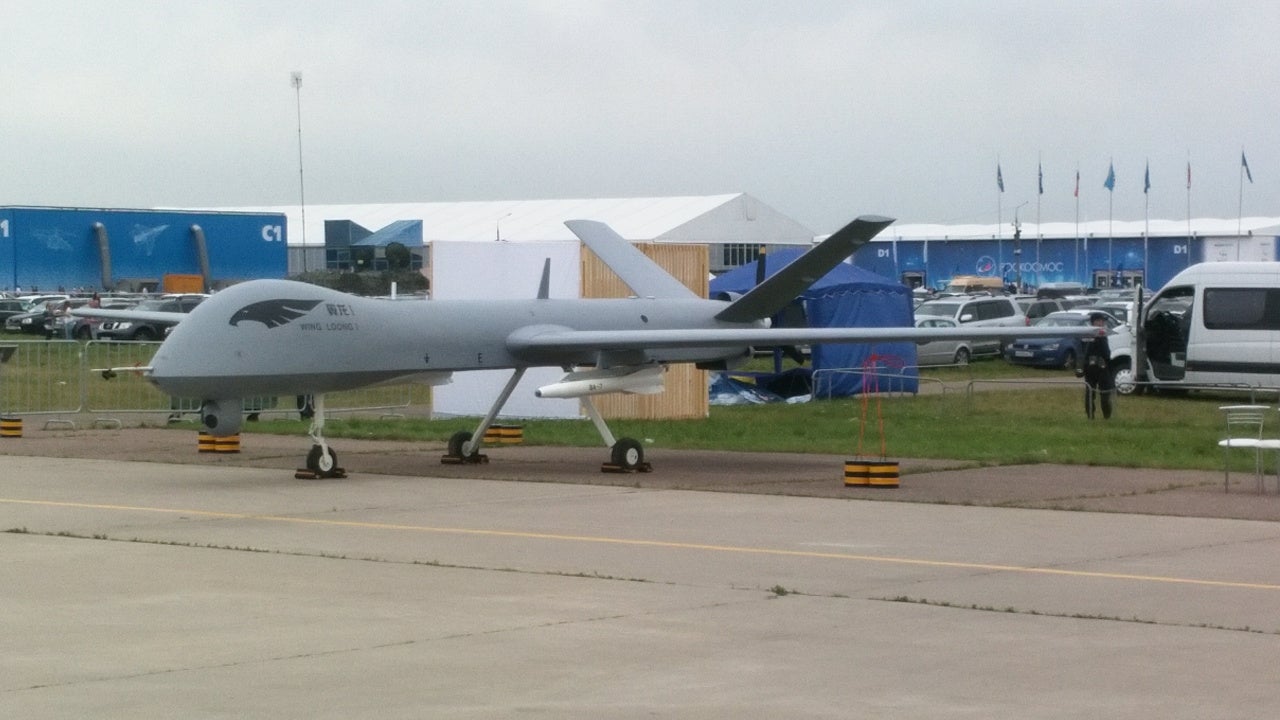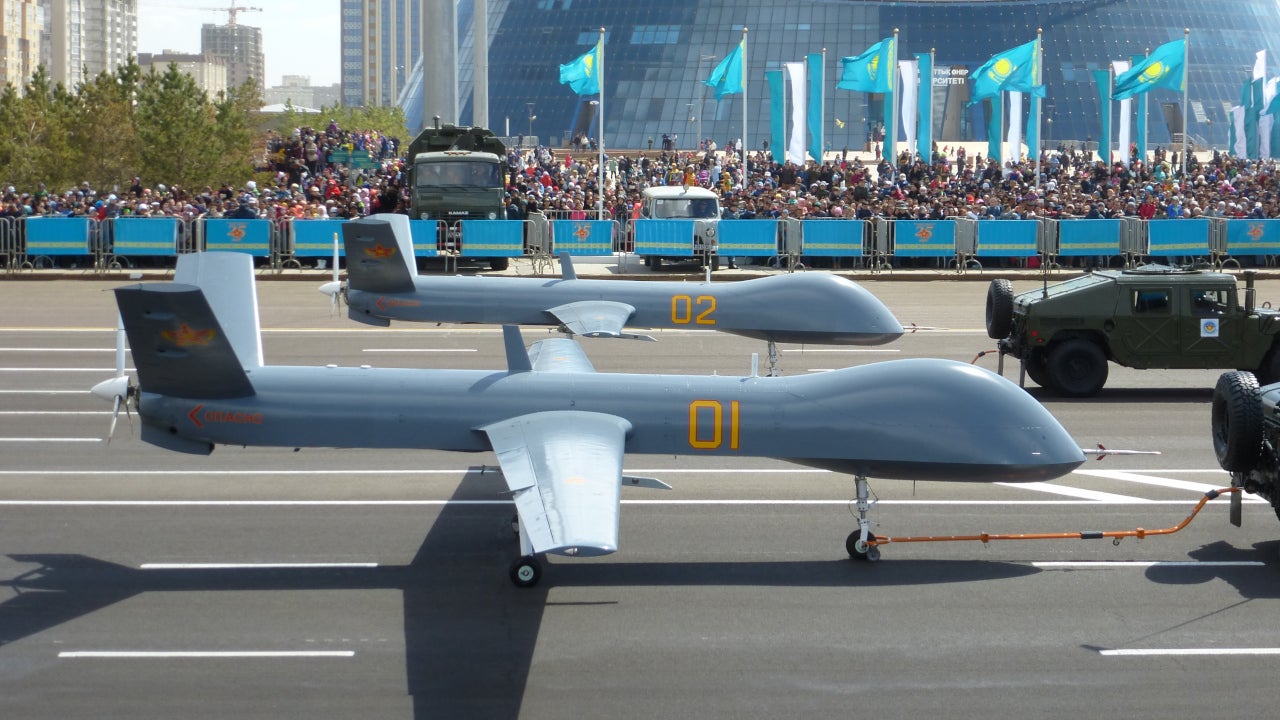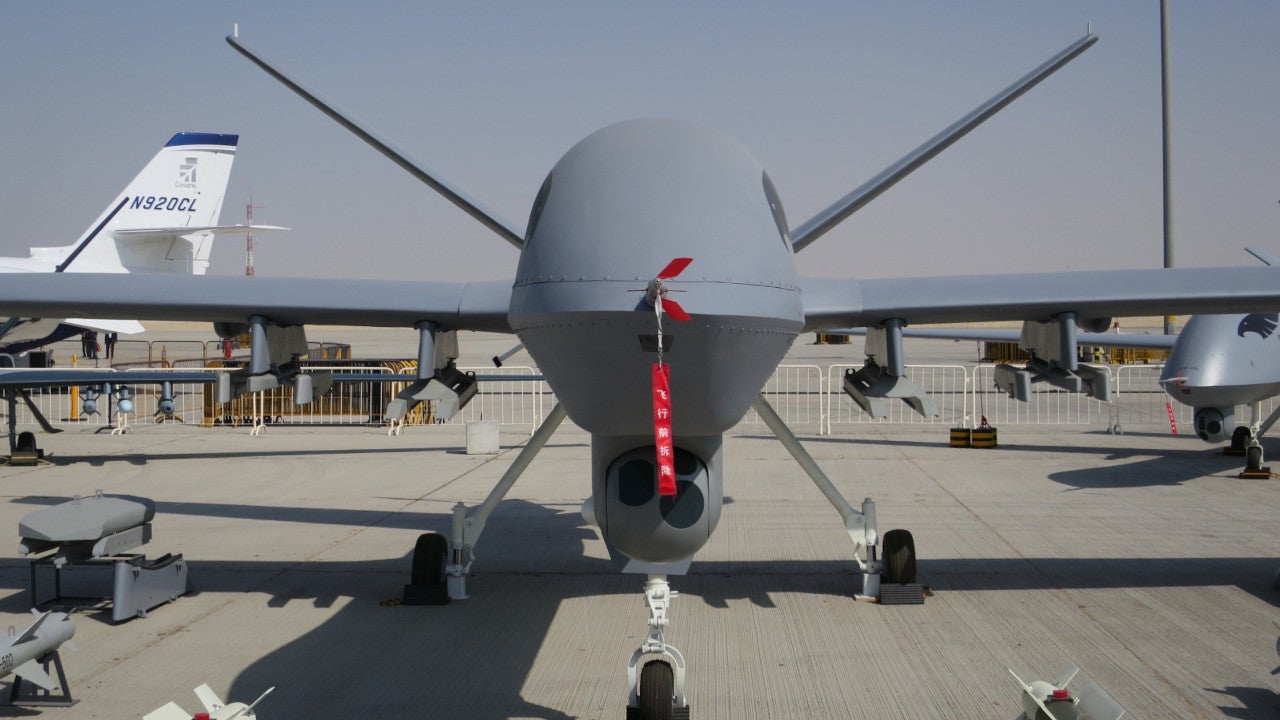Wing Loong (Yilong / Pterodactyl) is a medium-altitude, long-endurance (MALE), unmanned aerial vehicle (UAV) developed by Chengdu Aircraft Design & Research Institute (CADI), a division of the Aviation Industry Corporation of China (AVIC).
The UAV is intended primarily for surveillance and aerial reconnaissance mission requirements of the People’s Liberation Army Air Force (PLAAF).
Fitted with a variety of weapons, the drone has the ability to perform combat operations apart from civil tasks such as disaster assessment, meteorological operations, and environmental protection.
Development of the unmanned aerial vehicle began in 2005 and the first test flight was conducted in 2009. A prototype of the Wing Loong I was exhibited during the China International Aviation & Aerospace Exhibition held in Zhuhai in 2010.
Wing Loong II, an upgraded version of the Wing Loong, was unveiled at the Beijing Aviation Expo held in September 2015. More than 100 UAVs have been delivered to a number of countries as of November 2019.
In June 2020, the universal platform of Wing Loong I completed a series of tests, which determined that the air vehicle can provide space-air-ground emergency communications.
Wing Loong-10, the ground attack version of the Wing Loong, was unveiled at the Nanchang Airshow 2020 in November 2020.
Orders and deliveries
The UAV was sold to UAE in 2011 and to Saudi Arabia in 2014. In June 2016, the Kazakhstan Air Defence Forces received two Wing-Loong UAVs from Chengdu Aircraft Industry.
Serbia purchased nine Wing Loong armed drones with an option for acquiring 15 additional drones in future in September 2019.
In October 2018, Pakistan Aeronautical Complex and Chengdu Aircraft Corporation expressed its interest for purchasing 48 Wing Loong II drones to enhance surveillance and strike capabilities of the Pakistan Air Force.
The drone is also operational with other countries including Algeria, Egypt, Indonesia, Nigeria, and Uzbekistan.
Wing Loong UAV design and features
The Wing Loong UAV’s fixed mid-mounted wings with high aspect ratio provide improved performance by reducing the drag. Its fuselage structure is designed to minimise the radar cross section. It features two vertical tail fins, arranged in a V shape.
The tri-cycle landing gear, with two main wheels under the fuselage and one single wheel under the nose, facilitates safe take-off and landing.
The UAV has a length of 9.05m, a wing span of 14m and a height of 2.77m. It has a maximum take-off weight of 1,100kg and can carry loads of 200kg on external stores.
The base version has two hardpoints under the wings, while the Wing Loong II has six hardpoints.
A satellite communications antenna, mounted on the bulge at the top front surface of the fuselage, facilitates data transmission between the UAV and the ground control station.
Armament carried on Wing Loong The unmanned combat aerial vehicle can be armed with a variety of weapons including laser-guided bombs and missiles to attack and destroy air or ground-based targets.
The weaponry options include AKD-10 air-to-surface anti-tank missile, BRMI-90 90mm guided rocket, FT-7/130 small 130kg bomb with planar wing, FT-9/50 50kg bomb for drones, FT-10/25 25kg bomb, GB-7/50 50kg precision-guided munition (PGM), and GB-4/100 PGM.
Electro-optical payload pods
The electro-optical payload pod, fitted under the forward section of the fuselage, is integrated with day light and infrared cameras and sensors to collect surveillance and targeting data in both day and low-light / night conditions.
The UAV is also equipped with synthetic aperture radar, laser designator, forward-looking infrared (FLIR) camera, as well as electronic countermeasures.
Mobile ground control station The Wing Loong UAV and its payloads are remotely controlled by operator from the mobile ground control station using the consoles.
The control station receives payload information from the UAV via a data communications link and sends back command and control, as well as mission planning data to the air vehicle.
Propulsion and performance
The combat drone is powered by a 100hp turbocharged engine, driving a three-bladed propeller, mounted at the rear section.
The Wing Loong has a maximum flight speed of 280km/h, can operate over a range of 4,000km, and fly up to a maximum height of approximately 5km.
It can perform missions for more than 20 hours and can transmit data over a line of sight (LOS) range of 200km. Its take-off and landing roll distances are 600m and 800m respectively.






